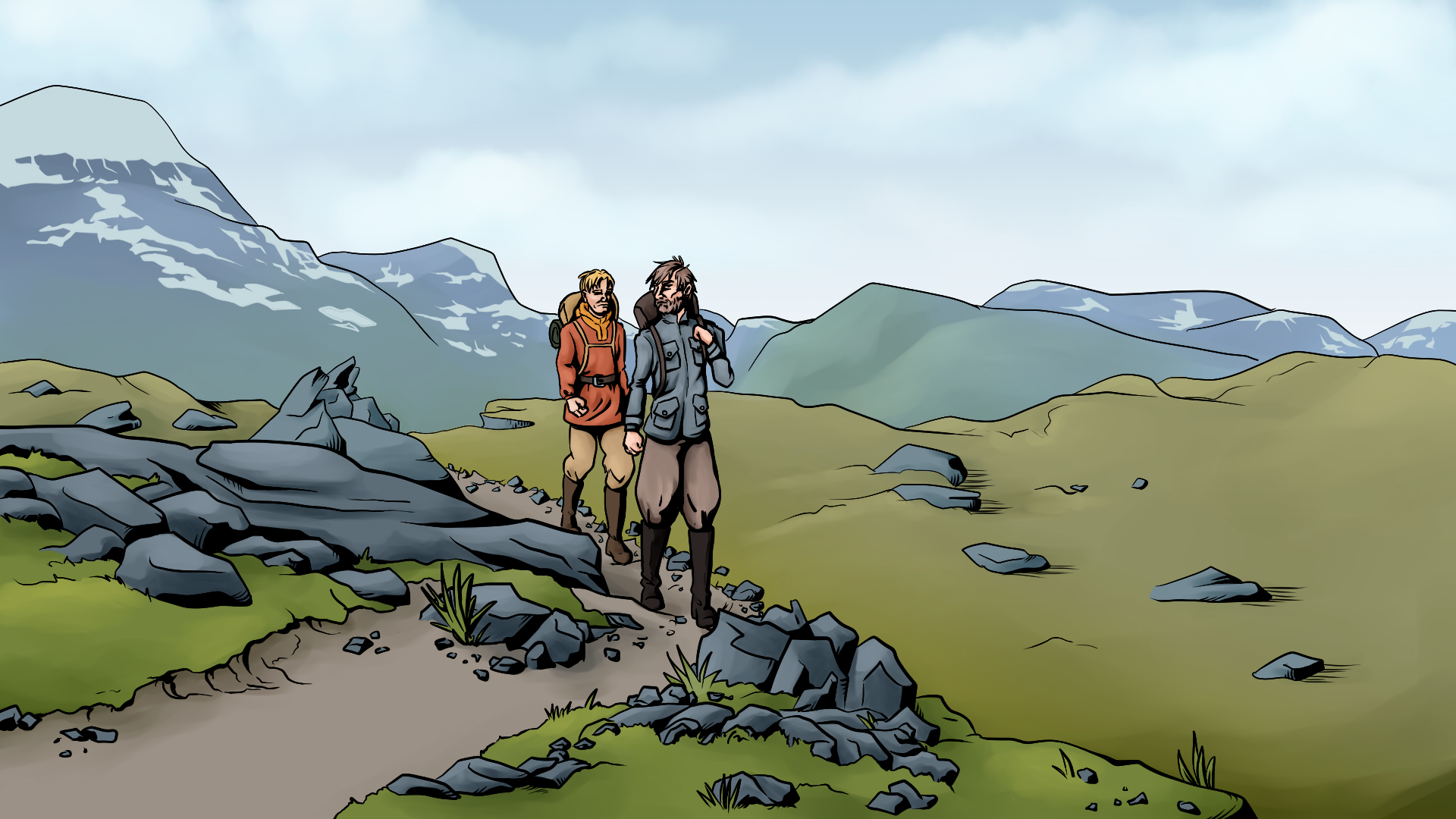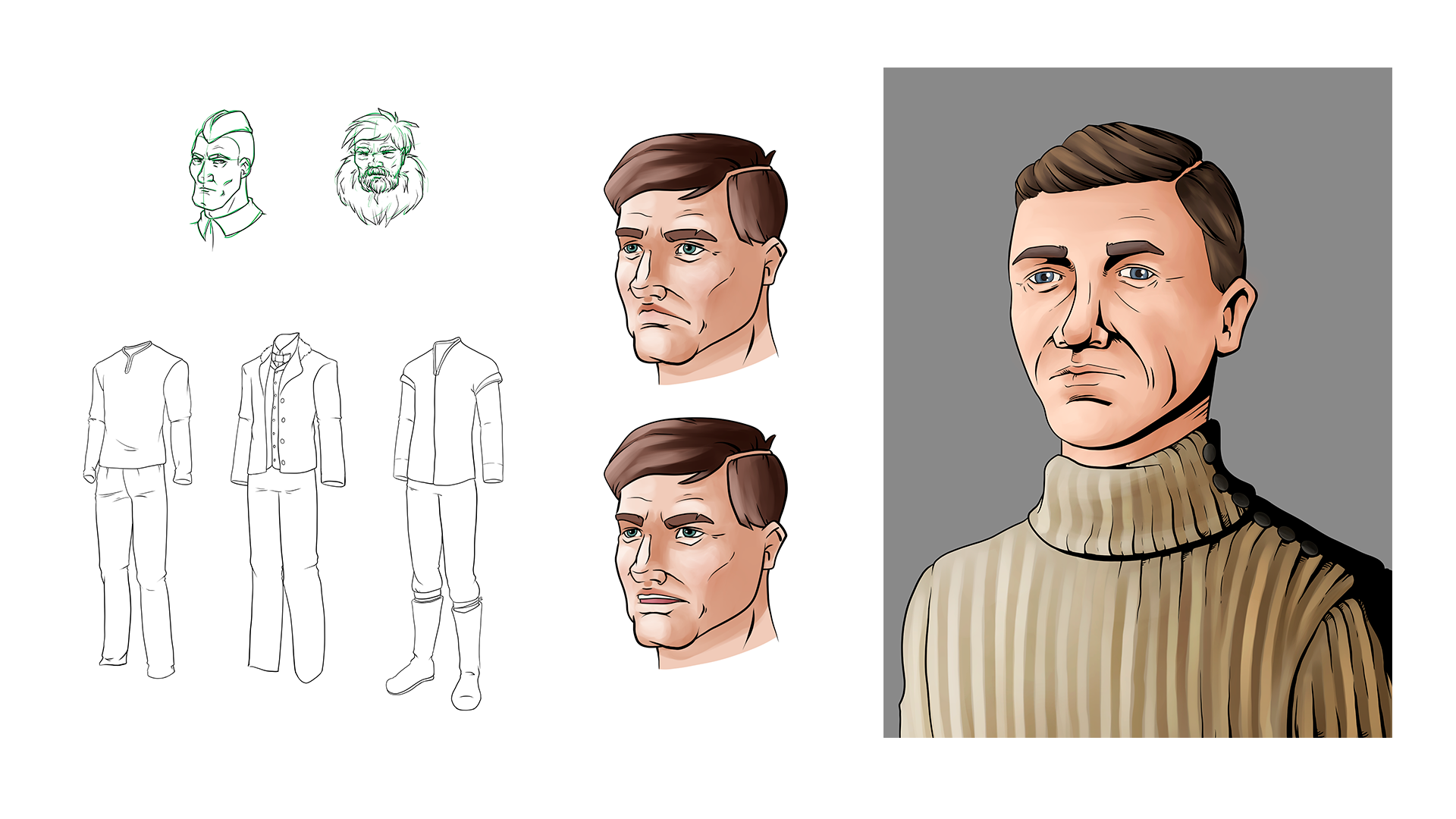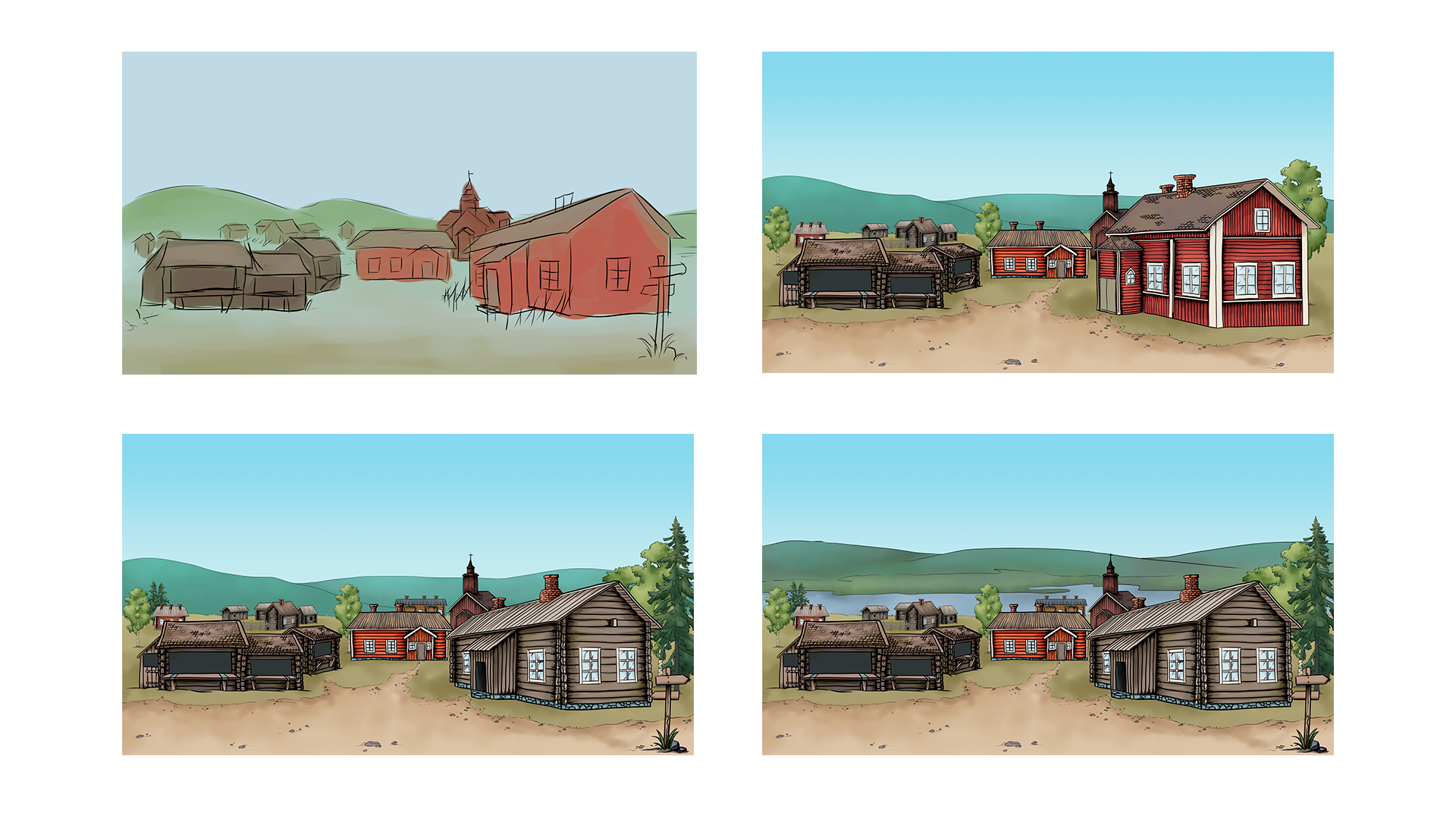By Sanni Mustonen, Lapland University of Applied Sciences
In game design process there is no precise starting point and no exact order in which things always go. There are methods established through both research and just plain trial and error but still, there is no one correct or standardized way of how the process works each and every time everywhere. Generally, the process goes from initial idea to defining the core mechanics to prototyping and producing the final product. The initial idea for a game might come from wanting to use a specific technology or device, or wanting to create a game that goes in a certain genre. One possibility for the initial idea of a game might also be wishing to tell a story, real or imaginary one. Struve mobile game fits the latter case, the initial idea was to tell a story of how the Struve Geodetic Arc came to be.
A story to tell is a good starting point but it is just that: a start. There are many more points to consider even before coding a single line. With Struve mobile game one of the most important things for the duration of the whole process has been and will be our relationship with historical material and historical accuracy. We are telling a story of real events and real people and can’t go too far from that reality, but first and foremost we want to make a game that is entertaining and engaging. A game that doesn’t entertain, that doesn’t hook its audience in any way will end up as a game nobody wants to play. So, if we find out the measuring work was repetitive and hand long pauses between any events, what do we do with that? A game with repetitive tasks and long periods of inactivity is not necessarily a very entertaining game. Or what about all the things we don’t know and will never find out about the real events? Do we only keep to what we know or fill in the gaps with something else? In one way what we are doing with the original story is somewhat similar to what happens when a film adaptation of a book is made. Time gets pinched and stretched a little to keep the pace and to better accommodate to a more compact format. Some aspects of the story are simplified and others emphasized in order to create a good dramatic arc.

There’s a lot of work in piecing together both the real story and the game’s story.
However, a real story in the background gives us only so much room to move which means fun and interesting game mechanics become even more important in turn. This is where the core loop of the game comes into play (pun intended). Core loop is what the player does over and over again to progress in the game. It is not the same as the background story or the player’s mission in the game. Those are reasons why the player does things core loop is what the player does to accomplish their mission. For example, core loop of snakes and ladders is first throwing the dice, second moving across the given number of squares and third reacting to the type of the square one landed in by either going up the ladder down the snake or staying in place. This is what all the players do in all of their turns. What makes this type of games entertaining is chance. Winning and losing in snakes and ladders is all about luck, which is why a very simple core loop is enough to keep people playing.
In Struve mobile game we’re including a fair bit of chance but giving the player tactical choice over what they do with the things they’re given. The core loop of the game is built around partially randomized events the player encounters while moving across the map along the Struve Geodetic Arc, and partially randomized characters the player can recruit. By including a degree of chance, we want to give the game replayability. Key events will stay the same on each playthrough but smaller problems the player faces and the way they can be solved vary each time. This way the game will also be interesting just for the sake of the game itself and we don’t have to rely on story alone to keep people playing. Still, when writing scripts of each event we come back to the story and to the time period. The source material gathered by the entire Struve project team gives us some information on the kind of problems the actual measuring crew had from unfavorable weather to hard to reach measuring points. Travel logs reports and other descriptions are then used as a base when writing the possible events of the game. Of course, not everything in the game can be 100% faithful to reality. Writing the events is constant balancing between the source material (or lack thereof), game mechanics and the limitations of mobile platform.
One more important and one of the most visible aspects of this game is its visual appearance. Struve mobile game is a 2D game and from the very beginning it was decided that all the images, sprites, of the game would be digitally hand drawn in a comic like style with strong dark outline. This style fits nicely to a mobile environment where screen size is fairly small and characters and items can’t be too detailed. To start defining the final drawing style, first concept art images were drawn months before discussion on the game mechanics began. Besides testing out and defining the style itself, concept art is used for designing environments and items. In the case of Struve mobile game where the game is set in the real world there is no need for designing futuristic weapons or fantasy costumes. This doesn’t remove the need for concept art, however. The real-life places included in the game have changed somewhat in the past century which means we can’t create the game environments by simply taking a photo of the current situation outside and replicating it in the desired style. Research on building and clothing styles, village and town life and so on is required to believably present a story set in the 1800’s. Photographs from the time are rare, so drawings paintings and written descriptions are important sources of information.

Developing the style of the game characters.
In addition to style and other visual aspects, there are technical requirements for game art. When working with mobile devices, the file size and physical size of images mustn’t get too large, yet image quality has to be sufficient. Images must also be divided into multiple layers so that adding animation or interactive features to only certain parts of the image is possible. Building a single image out of multiple parts also makes modular character and environment creation possible. For example, drawing three faces three hairstyles and three outfits that can be mixed and matched makes 27 different combinations possible. Drawing 9 images that can be used in different combinations takes much less time than drawing 27 unique images. The same can be done with some environments. Switching some buildings and backgrounds creates an illusion of several unique settlements.

An environment designed to be modular for easily creating variations.
These are some of the first few phases of the development process of Struve mobile game. As of December 2020 we are in very early prototyping stage where the most basic mechanics of the game are being tested and technical background work is being done. In the next stages we will develop a very crude largely text-based version of the game to see how all the basic mechanics work together and what needs to be changed. From there the process works iteratively: we add a few new features, test if they work, scrap or alter what doesn’t, make changes to the game and test again.




